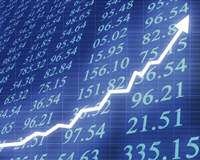When stock markets have risen significantly, often some of the best investing opportunities is in the sectors that have been unloved and overlooked. Lorne Zeiler, Portfolio Manager and Wealth Advisor at TriDelta Investment Counsel was one of three portfolio managers asked where to look for value investments today by Globe and Mail reporter Joel Schlesinger (February 28, 2017).
 As stock markets reach new heights, especially in the United States, investors might be recalling the adage “what goes up must come down.”
As stock markets reach new heights, especially in the United States, investors might be recalling the adage “what goes up must come down.”
But by the same token, what has been down – the unloved, undervalued and overlooked – usually bounces back, eventually. With that in mind, consider these investments.
Health-care stocks
Even though the U.S. equity market has experienced a record-breaking runup, health-care stocks still have attractive valuations, says Lorne Zeiler, portfolio manager and wealth adviser with TriDelta Financial in Toronto.
“The sector was held back in 2016 due to concerns of increased regulation affecting drug pricing, first by a potential Clinton presidency and then from comments by President-elect Trump,” Mr. Zeiler says.
But these fears are likely exaggerated, he says. Earnings are forecast to grow by 8 per cent in 2017, and stocks are trading at about 15 times forward earnings around their five-year average, while nearly every other sector trades significantly higher.
Here are two stocks to consider:
- AbbVie Inc.: The maker of Humira, a popular drug to treat rheumatoid arthritis, AbbVie has a “strong pipeline of new medications expected to be approved” soon. Moreover it has a decent dividend yield of about 4 per cent and trades at less than 12 times estimated forward earnings. One concern is that the company is heavily reliant on the performance of Humira, which makes up half of its sales.
- Abbott Laboratories Ltd.: This diversified company earns revenue from generic pharmaceuticals, medical products and nutritional supplements such as Ensure. Abbott is forecasting good earnings growth due to its expanding sales of diagnostic technologies and recent acquisitions. “Risks to the stock price include pricing pressure from competitors and foreign exchange, particularly for its emerging-market sales,” Mr. Zeiler says.
Emerging markets
These generally fast-growing economies have faced a laundry list of problems, says Navid Boostani, a portfolio manager and co-founder of ModernAdvisor, a robo-advisory in Vancouver.
“Slowing growth in China, political turmoil in Turkey and Brazil, and economic sanctions against Russia have all been headwinds,” Mr. Boostani says. “But we think the bad news is already priced in, and long-term investors have a unique opportunity today” to buy low.
Here are two exchange-traded funds (ETFs) for investors who want to tap into emerging-market growth:
- Vanguard FTSE Emerging Markets All Cap Index ETF: Rather than playing one particular market, this fund provides exposure across the board. It charges an industry-low management expense ratio (MER) of 0.24 per cent (for the TSX) with a distribution yield of 1.24 per cent. Most importantly, this sector has room to grow. “Both [emerging market] currencies and equities are trading at close to historical lows,” Mr. Boostani says. A bumpy ride could lie ahead, though, as the U.S. becomes increasingly protectionist and its dollar increases in value, pushing up borrowing costs in developing nations.
- PowerShares DB Base Metals Fund ETF: Another play on emerging-market growth is to invest in commodities, and this ETF provides that exposure without the complications and barriers that retail investors face in buying futures contracts directly. Investors in this fund get access to a basket of futures contracts for base metals such as aluminum, zinc and copper, all key to industrial and manufacturing growth. “Commodities came off of a five-year bear market in 2016, with industrial metals leading the charge,” Mr. Boostani says. “The bulk of demand growth is expected to come from robust economic activity in China.” Commodities tend to be very volatile, however, so they should make up only a small portion of a well diversified portfolio, he adds.
Playing volatility
Mark Yamada, portfolio manager and chief executive officer of PUR Investing in Toronto, cites two ways to capitalize on volatility. For those who can handle large swings in price, China has been unloved of late. Yet it offers a lot of upside, he says. At the opposite end of the spectrum, consider low-volatility equities, such as banks, utilities and consumer staples, which have fallen out of favour recently as investors set their sights on recovering energy and other commodity related stocks.
Two to consider:
- iShares China Index ETF: China is the largest of the emerging markets, so it has great influence on the world economy. “China has been in the doldrums, albeit with 5- to 6-per-cent GDP growth,” he says. With Mr. Trump pushing an America-first agenda, likely increasing barriers to global trade rather than removing them, “the Chinese will benefit,” Mr. Yamada says, filling the void in global leadership for free trade. Moreover its growing middle class is increasingly driving the Chinese economy, meaning China will rely less and less on U.S. consumption. Still, the Chinese marketplace can be a pricing rollercoaster, he notes.
- BMO Low Volatility Canadian Equity ETF: If the ups and downs of emerging markets make you queasy, consider a low volatility approach that focuses on steady parts of the equity market. Many experts have been down on low volatility stocks of late, arguing that they are overvalued and will be outperformed by growth stocks with greater volatility. But Mr. Yamada contends that high volatility stocks do not add value to portfolios over the long term as much as their low volatility counterparts. This BMO ETF offers investors a diversified basket of Canadian banks, utilities and other defensive stocks. And while it may have “lagged the S&P TSX Composite for the past year because it was underweight energy and minerals … it is a great long-term core holding.”

